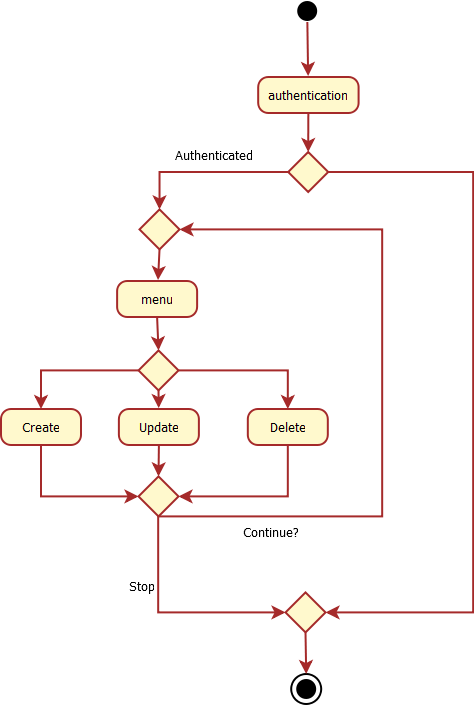Java Fundamentals
Activity Diagrams and Loops
Lecture 5
UML activity diagrams, while, do-while, for loops, and arrays

This work is licensed under CC BY-NC-SA 4.0
© Way-Up 2025
Summary of the last lecture
- We learnt to use eclipse to write and run java code
- We began to see the control flow statement through the
if(){}else{}andswitch(){case:}statements
How to represent and organize the flow of our program ?
Program execution flow : Activity Diagram
Activity diagrams help developers to represent the succession of tasks necessary to complete the
algorithm
- The activity diagram is very less difficult to write than a class diagram
- The activity diagram can often be confused with the state diagram, which we will see just after
- The activity diagram can naturally be written from the natural language expression of the algorithm
Program execution flow : Activity Diagram (2)
Example of an activity diagram usage : first part of the Java project
"Your application should comport a scenario which authenticates a user, and makes him use the Identity
management through predefined methods, Create, Update, Delete ..."
Program execution flow : Activity Diagram (3)

Program execution flow : Activity Diagram (4)
-
Activity symbolizes an operation in the algorithm
-
Gate symbolizes a decision point or a join in the treatment
Program execution flow: Activity Diagram (5)
-
Fork Symbolizes several operations run in parallel
Exercise (part of the project) : Realize the authentication of the application
Use what you learnt about the user input/output to realize a login functionality
- This corresponds to the first part of the activity diagram
- The good "credentials" (couple of a login and a password) will be hardcoded
- If the user is authenticated, he is proposed a menu, inviting him to select among 3 operations (Create, Modify, Delete)
Repeat operations in Java : the while loop
// while
int size = 10;
int i = 0;
while (i < size) {
//Some repeated instruction
i++;
}

Repeat operations in Java : the do-while loop
// while
int size = 10;
int i = 0;
do{
//Some repeated instruction
i++;
} while (i < size);

Repeat operations in Java : the for loop
// for-loop
String[] table = new String[10];
for (int i = 0; i < 10; i++) {
String current = table[i];
System.out.println(current);
}
// for-loop, "foreach" way
for (String s : table) {
System.out.println(s);
}

Java data structures: Arrays
- Dimension
//Declares a table of 10 strings String[] table = new String[10]; int tableLength = table.length; - Access by index
//Accesses the occurrence at the first index String occurrence = table[0];
Exercise: A factorial implementation
According to the preceding slides, write the factorial computing in 3 different iterating ways
Hint : Remember that the factorial is defined by : 
Try to enforce some best practices
- Make a dedicated class named
Factorial - Write three static methods (one for each implementation) and think about the return type
- Write one
static void mainmethod calling all the three methods with parameters
Exercise: Completing the project menu
Complete the project application flow according to the activity diagram



